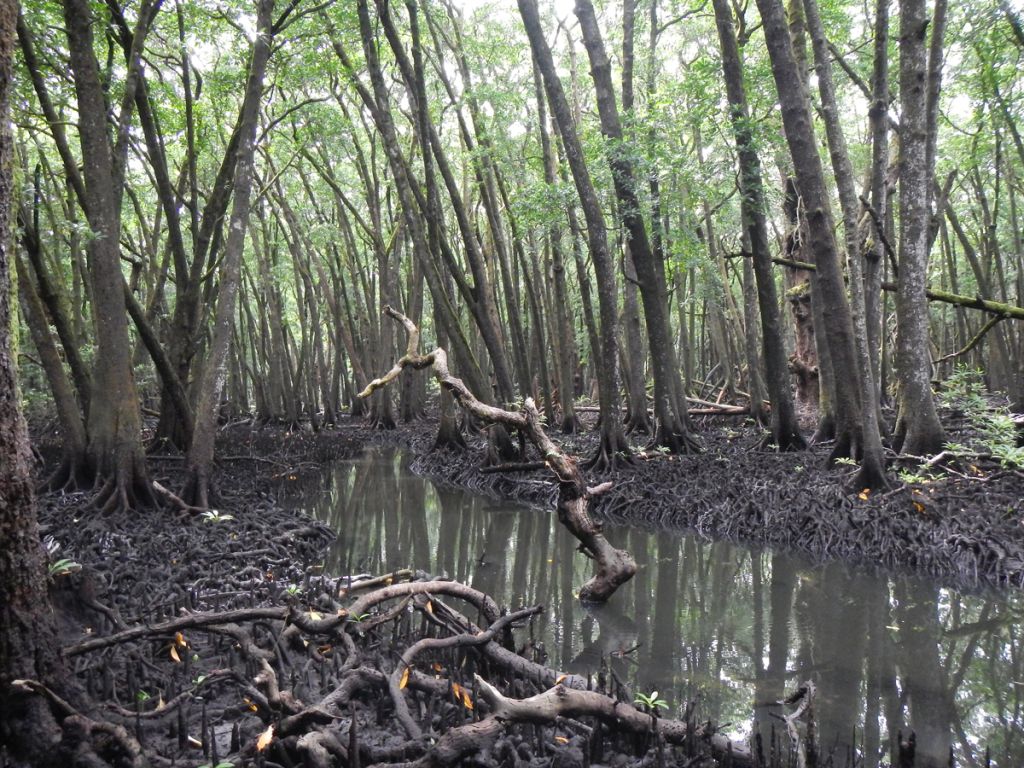Developing a Pacific mangrove monitoring network (PACMAN) in response to sea-level rise
Continued sea-level rise from a changing climate is expected to result in the loss of many coastal mangrove trees, which will strongly affect human populations on isolated Western Pacific Islands as they rely heavily on mangrove forests for food (fish, shrimp, and crabs), building materials, and firewood. Mangroves also protect local communities from tsunamis and cyclones and are important for climate change mitigation because they remove and store large amounts of atmospheric CO2 in trees and sediments. Mangroves have kept up with sea-level rise in the past by building up their forest floor elevations relative to sea level through tree-root growth and accumulation of sediments delivered by adjacent rivers or oceans. However, it is not clear if mangroves will be able to survive current or future rates of sea-level rise, not only because of the projected acceleration of sea-level rise rates, but also because of human activities that influence the natural response of mangroves to sea-level rise such as land-use conversion, overharvesting, or development that alter water flow and sediment delivery.

Identifying which mangroves are most resilient or vulnerable to sea-level rise allows managers to determine how to protect or restore them so that they can continue to support the well-being of Pacific Islanders. This project will build a Pacific mangrove monitoring network (PACMAN) with partners from the Republic of Palau, the Federated States of Micronesia (Kosrae, Pohnpei, Yap), the Micronesia Challenge (regional challenge to conserve 30% of terrestrial resources by 2030), and the Micronesia Conservation Trust. The purpose of the PACMAN network is to work together to protect and restore mangrove forests vital for Pacific Islander existence.
This network will use standard methods to measure how fast the mangrove forest floors are rising or falling relative to sea-level rise, identify what factors influence that rate, and develop strategies to help mangrove forests keep up with sea-level rise. The project team will also develop a user-friendly program that will allow resource managers on each island to process and analyze data that they have collected. Finally, the utility of a drone-based LiDAR for creating high resolution baseline digital elevation maps (DEMs) of mangroves will be evaluated and compared to airborne LiDAR and other methods. Understanding how the elevation of the coast changes at a finer resolution is a critical and missing component of current efforts to identify which coastal areas will be most impacted by changes in sea-level rise. Information will then be shared with each other across groups created through social media outlets as well as through annual virtual meetings.
PROJECT DETAILS
FUNDED:
FY2022
PI:
Richard Mackenzie
Research Ecologist, US Forest Service
Co-PI:
Maybeleen Apwong
TCBES, UH Hilo
Collaborators:
Adelle Lukes Isechal
Palau Ministry of Environment
Patrick Colin
Coral Reef Research Center
Frances Ruegarong
Yap Forestry
Ryan Talken
Yap Forestry
Eugene Eperiam
Pohnpei Forestry
Maxson Nithan
Kosrae Island Resource Management Authority
Ken Krauss
Wetland and Aquatic Research Center
Karen Thorne
Western Ecological Research Center
Kevin Buffington
Western Ecological Research Center

